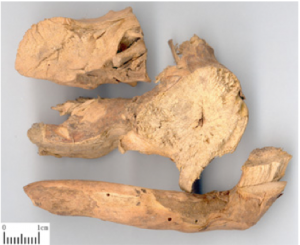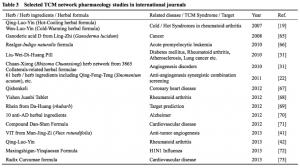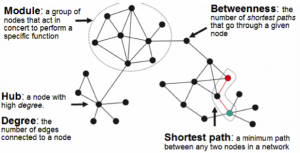Chang shan (常山) is a medicinal herb that has been used for well over 2000 years in traditional Chinese medicine for the treatment of malaria. Its popularity has dwindled as the popular Artemisinin herb (青蒿素) has replaced much of its use. However, it has recently been discovered that Chang shan has a selective suppressive effect on the immune system. This property has led to its use in a range of autoimmune conditions such as rheumatoid arthritis, psoriasis and thyroiditis. In the past week I visited five different traditional chinese clinics with a hope to find out more information about this herb and its clinical use. All of the doctors I spoke to were aware of its use in malaria but were not aware of its recent application to autoimmune diseases. It seems as though this information has not yet trickled back down into the traditional Chinese medical community.
In a recent study undertaken by Harvard university (Zhou et al, 2013), it was found that the active component in Chang shan that suppresses the immune system is a compound called Halofuginone. It acts to specifically inhibit Th17 cells without dampening the immune systems’ response to invading pathogens. Th17 cells were only recently discovered in 2007 and have been implicated in driving autoimmune diseases by releasing pro-inflammatory cytokines. The way that this compound specifically inhibits Th17 cells is through blocking proline-aminoacyl tRNA synthetase. It does this by binding with ATP and mimics the effects of proline-deprivation. It is still unknown why proline is essential for Th17 maturation but not for other immune cells.
This finding has led to a huge collaborative effort at Harvard university to reverse engineer the compound Halofuginone ,with the hope of gaining FDA approval. In one way, monetizing this drug and making it a marketable commodity is a sad re-occurring feature of today’s medical field. Many people will not be able to benefit from this drug’s therapeutic effect and some will never be made aware of its existence. Chang shan is just one example of many traditional chinese medicines that pharmaceutical companies have reverse engineered to create patented FDA approved medication (See Below, Table 1).
Currently Chang Shan is available on the Chinese public market for around 8 RMB per 500g (1.2 US $), but this price is likely to increase in the next decade as the demand grows. Nevertheless, the biochemical mechanisms involved suggest that Aminoacyl tRna synthetases (AARS) are viable drug targets for a whole range of pathological conditions. A few years ago, AARS were thought to only play a major role in maintaining the high fidelity of Protein translation. In recent months, however, AARS have been implicated in Autosomal Recessive Spastic Ataxia with Leukoencephalopathy and a range of autoimmune diseases (Yao et al., 2013).
When I was first introduced to traditional Chinese medicine (TCM) in 2009, I thought it was an outdated medieval science but I have discovered that it is not just a validated peer-reviewed science, it is a philosophy. In Western civilization we often hear of the terms ‘yin’ and ‘yang’ to describe seemingly opposing forces in nature that really work harmoniously together. Similarly, a medicinal herb is really a concoction of thousands of compounds, some of which potentiate the effect of the main active compound or antagonise its pharmacological effect, keeping it in a tight regulated balance. In Western medicine we often try to explain disease in terms of ‘one drug, one target’ and we therefore try to isolate and purify the main active compound that elicits the desired therapeutic effect. However, diseases are not linear processes as there is a wealth of ‘cross-talk’ between different signaling pathways and ‘silent’ molecular interactions that go unseen. Therefore, the holistic approach in TCM is more reflective of the diseased health state by targeting multiple drug targets at once.
In recent years there has been an emerging trend towards this philosophy under the branch of science termed ‘network pharmacology’. Figure 1 shows a network of nodes which represent functional proteins and a highly connected node is called a hub. If a hub is defective, then , generally speaking, it will be more disastrous for the overall system than a node with fewer interactions. By designing individual therapies to interact with multiple drug targets, it may be possible to prevent adverse effects and improve patient’s compliance with medication therapy.
In the next decade I predict that modern antibiotics will be supplanted by newly developed pharmaceutical agents as resistance emerges in community and nosocomial infections. Pseudomonic acid (mupirocine) which inhibits specific AARS enzymes has been used as an alternative to vancomycin for bacterial infections. Phenylthiazole 1,3,5 traizine derivatives inhibit candida albicans leucyl-tRNA synthetases for a new class of antifungals (Singh et al, 2013).
In comparison with, for example, terbinafine and itraconazole, compound C10 (AN2690; AARS inhibitor) is a very promising candidate for treatment of ungual and periungual infections with improved nail penetration and low keratin binding. Furthermore, a recent comprehensive bioinformatic analysis revealed 26 AARS and five freestanding editing domains in Leishmaniasis major (protozoa). The unique features identified in this work provided rationale for designing inhibitors against parasite aminoacyl tRNA synthetases and their paralogs (Gowri et al , 2012).
We are at the beginning of an exciting new era of academic research and innovation, and although we are constantly presented with many obstacles, we must not forget medicines’ best teacher, nature itself.
References








Very nice article. Where can I get my hands on this herb?
Linda
Hi Linda. Thank you for your comment. Chang Shan is extremely difficult to find at the moment. However, Chang Shan is the root of the Blue evergreen hydrangea. Maybe you could find the plant easily. I do know of some people who have used it topically for Psoriasis and Dermatomyositis with positive results. Although this herb has been used for thousands of years it is still undergoing clinical trials in the US and has not been given FDA approval so I still would not advise you to use it at this stage. There are no reported adverse effects from taking chang shan but this may change with time. I suggest you still use your normal medication until Halofuginone has been FDA approved.
Thanks for sharing, this is a fantastic post.Thanks Again. Really Great.
I am a 72 yr. old, physically fit, person who is being treated for 2 autoimmune diseases with horrible cancer drugs. I am an organic, herb type person and looking for alternatives such as this. If it has been used for 2,000 years I am not afraid to try it. Once I get my acid/alkaline balance back (by using alfalfa, Korean bamboo salt & arrowroot powder) I’ll get off this drug and try it. I can’t thank you enough.
Probiotics (to reverse some of the damage to the gastrointestinal tract which is said to be the ROOT cause of all these a.i. diseases) will also be worked on too. MD’s have no clue as to root causes.
I’ve been online for nearly 30 yrs. and Thank the Creator of the Universes for it….and thank you profusely.